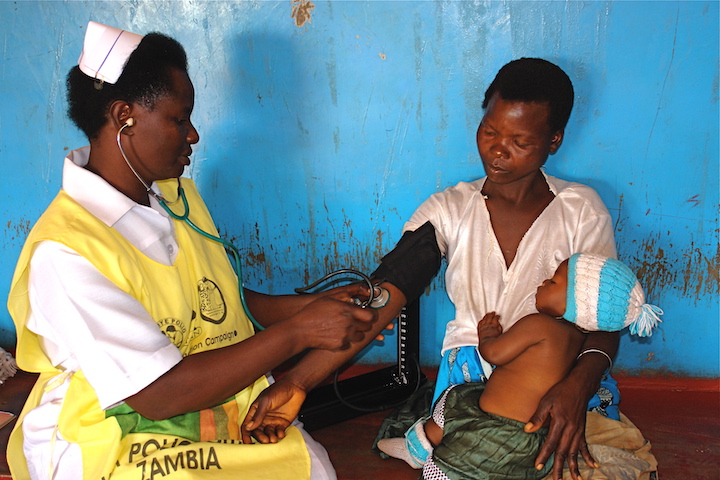Is there a secret to longevity? This health expert says 1,000% yes
In the era of social media, post-COVID, and with mental health at the forefront, a shift is taking […]

The most recent Global Fund Country Report for Zambia, offering a detailed account of health outcomes in 2021, underscores the invaluable contribution of the partnership to the country’s fight against HIV, tuberculosis (TB), and malaria. It highlights the progressive strides made in reducing the incidence and mortality of these diseases, showcasing a significant impact on Zambia’s health landscape.
A beacon of hope in Zambia’s health battle
Since 2003, The Global Fund has channelled an investment of US$1.7 billion into health programmes in Zambia. Their steadfast commitment to combat HIV, TB, and malaria, coupled with the development of resilient and sustainable health systems, has resulted in the saving of 1.2 million lives.
In a collaborative approach, the Global Fund, Zambia’s Ministry of Health, the Churches Health Association of Zambia, and other key partners have initiated interventions aimed at significantly reducing the prevalence and mortality of the three diseases, while enhancing Zambia’s preparedness for future health threats.
HIV control & prevention: Zambia’s significant strides
As of 2021, Zambia has seen a considerable decline in new HIV infections and AIDS-related deaths over the past two decades. UNAIDS data reveal that approximately 1.3 million people were living with HIV, out of which 91% were aware of their status. Encouragingly, 90% of people living with HIV were receiving antiretroviral therapy (ART), which equates to 99% of those who were aware of their status. Furthermore, 87% of people living with HIV had a suppressed viral load, reducing the risk of transmission.
Zambia’s efforts to halt the HIV epidemic also saw 49,000 mothers living with HIV receiving essential medicine to safeguard their lives and prevent HIV transmission to their babies. Additionally, HIV prevention programmes reached over half a million young people aged between 10-24.
Despite these achievements, significant disparities persist in the HIV burden among different genders and age groups. The Global Fund continues its mission to address these gaps and counteract stigma and discrimination against key populations, employing strategies such as adolescent and youth-friendly services and targeted prevention, testing, and treatment activities.
Tuberculosis: progress amidst challenges
Zambia’s fight against tuberculosis has seen commendable progress, despite the disease remaining a substantial public health threat. The 2021 report showed a promising 84% treatment coverage among the estimated 60,000 people with TB. Moreover, the TB treatment success rate was estimated at 91%, while that for drug-resistant TB stood at 75%.
While the number of people newly diagnosed with TB fell by 18% compared to 2002, Zambia remains among the 30 highest TB/HIV burden countries in the world. Addressing this challenge, the Global Fund prioritises activities to close gaps in diagnosis, particularly for HIV and TB co-infection, and bolsters local strategies to tackle TB in community settings.
Malaria: Advancements in the face of persistent obstacles
Zambia’s efforts against malaria have resulted in a 20% decline in deaths and a 6% drop in new cases between 2002-2021. In 2021, over 13 million people with suspected malaria received a parasitological test, a considerable improvement from a decade ago. The report also notes the distribution of nearly 1 million insecticide-treated mosquito nets and the implementation of indoor residual spraying in 2.4 million households.
Despite these achievements, malaria remains endemic in Zambia, and the Global Fund continues to support a robust response through grants aimed at enhancing quality, efficiency, and intervention implementation rates.

In the era of social media, post-COVID, and with mental health at the forefront, a shift is taking […]

With its fast speeds and revolutionary potential, 5G stands out as a noteworthy milestone in the field of […]